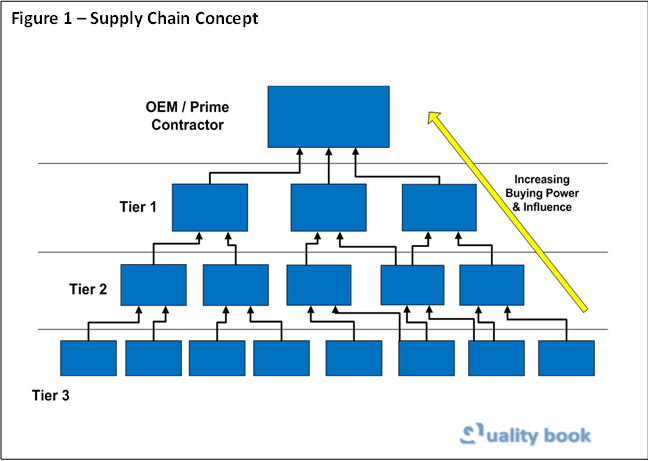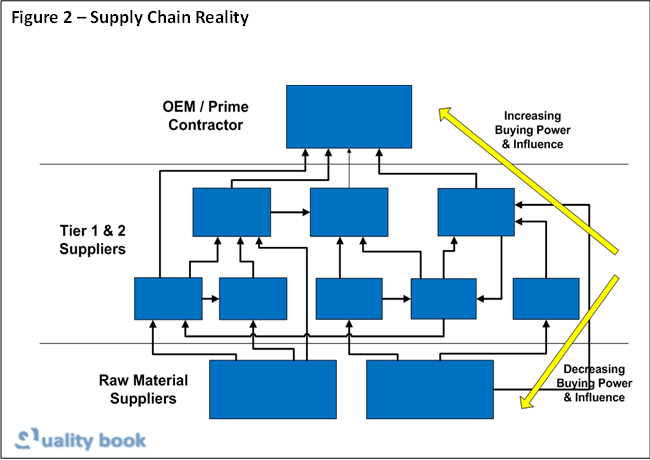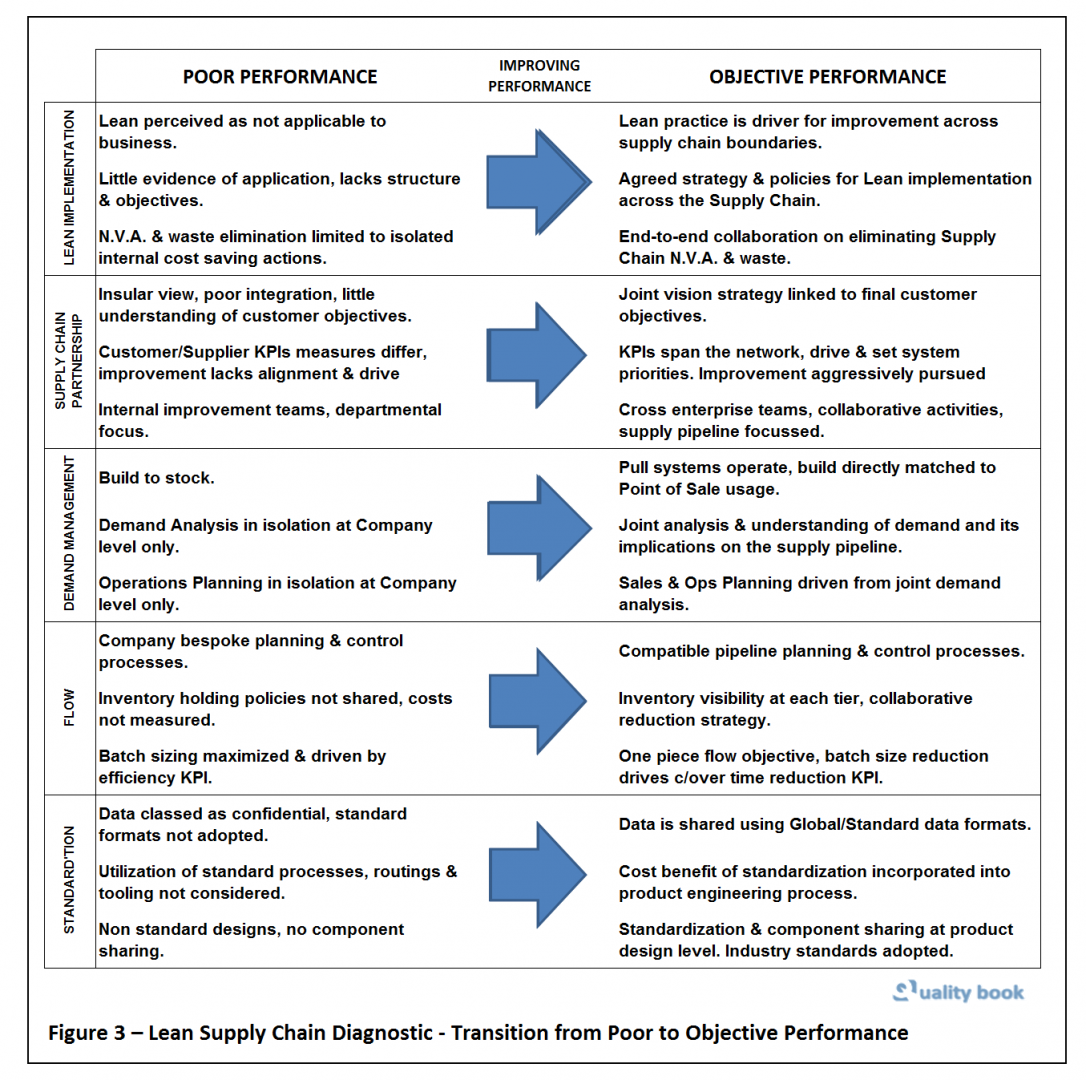Lean supply chain helps to optimize entire supply network by reducing waste, and optimize cost, and Streamlining processes
The current economic climate with tighter controls on cash flow and credit limits puts even greater emphasis on supply chains to reduce costs, inventory and throughput times. Whilst many companies have applied lean principles to great effect to address. These challenges within their own facilities, their application across the supply chain boundaries is far less establishment.
Supply chain cost reduction strategies typically focus on high value inventory identify using ABC classification. Increasing delivery frequency, kanban or sequencing usually, requires some level of investment in process flexibility.
So the levelled mix of product can be produced within the required takt time. Consignment stocking simply passes the stock holding costs on to the supplier. Who will invariably recover them through some other means.
Transferring production overseas to low-cost manufacturing bases can generate significant cost benefits. However, maintaining price competitiveness requires cheap transport. Usually in the form of container ships, which is off-set by longer lead times. Invariably overseas orders are based on forecast requirements, which will increase exposure to product mix changes.
Clearly, the longer the lead time, the greater the exposure, unless there are local stock consolidation arrangements, from which product can be pull. Procuring materials from approved sources adds further complication and potential lead time implications as does managing returns in the event of rejects, particularly if there is any dispute over standards or liability.
Supply chain concept
The approach is generally best suited to stable products having a predictable demand with ready access to raw materials and manufactured through processes having high process capability.
Purchasing agreements that incorporate year on year cost down targets leave achievement in the hands of the suppliers. Who can find themselves financially squeezed between agreed customer targets and raw material price increases imposed by large conglomerates, over which they have little influence.
The effectiveness of these common strategies is often limited by each supply chain member acting as a separate entity.
Furthermore, whilst cost minimization is always high on the agenda of any supply chain manager, the priority is always protecting the customer, closely followed by protecting internal manufacturing processes.
This invariably takes the form of inventory, either as raw material to safeguard against supplier delivery or finished stock as protection against processing failures and demand changes that fall inside manufacturing lead times.
KPIs
The reality for many companies is cost reduction of inbound materials (including transportation) is driven by purchasing functions measured by cost saving KPIs. Whilst management over inbound materials delivery is driven by a material planning and logistics function, measured primarily by outbound delivery KPIs followed by stock holding KPIs.
For many, whilst there is a functional link between purchasing and MP&L, purchasing is a centralized function, whilst MP&L is site based and often reporting into operations.
The focus on driving inefficiency and waste from the combination of processes that manage the supply pipeline, particularly across company transaction boundaries, is greatly overlooked. Yet it presents what is probably the most significant opportunity for improvement and cost saving.
However, it will require the supply chain functions to re-think the way in which they interact, which is often the result of the complex inter-dependent supplier network in which they operate.

Supply chain architecture
The common but somewhat oversimplified concept of supply chains is of a structured pyramid, having a primary contractor or OEM at the top, linked to an increasing number of smaller suppliers sitting in sub-tiers. Influence can be exerted over the tier beneath because of buying power.
Whilst this may be the case for the OEM and some Tier 1 suppliers. Below this the number of suppliers can reduce significantly, along with influence from the level above.
The reality is a pentagon within which there are transactions in multiple directions and across tiers see figure two. The complexity of this network means whilst some issues may be expose. The underlying causes remain hidden.
Furthermore, tackling issues in isolation presents the danger of following a sub-optimization route. Such that problems solved in one area will often emerge elsewhere in another form. Effectively improving the situation therefore requires examination of the overall process in sufficient detail. In order to fully understand the implications to the supply pipeline.

Lean supply chain
The concept of lean supply chain aims to address these issues and can be summarized as supply chain optimization combined with the elimination of waste by the collaborative application of lean principles and supply chain best practice. This is supports by jointly developed standards, measures and disciplines, achieved by viewing the supply chain as a single system or value stream.
Amongst the potential benefits of collaboration between the supply chain functions is end-to-end visibility of the supply pipeline, enabling control over location and size of buffer stocks. Joint analysis and planning have the potential to eliminate demand amplification generated through poor signal control and incompatible MRP lot sizing. As well as improve overall system responsiveness.
Diagnostics built on APICS supply chain best practice assess supply chain management performance against five key attributes:
Lean implementation
Effective implementation of lean within the four walls of any business requires structured deployment. It having future state goals linked to business objectives. Because the supply chain crosses the company boundaries. It becomes even more critical to develop a document policy for implementation in order to both support active cooperation. As well as drive improvement across boundary transaction points.
End-to-end processes need to be understood by all supply chain partners to enable collaboration in eliminating non-value-added activities. The focus should be on waste elimination, and not cost reduction as a pre-occupation of reducing costs may lead to oversight of waste activities. As not all have direct financial cost. Cost reduction will be an inevitable consequence of waste elimination.
Partnership and integration
Supply chain partnership is the vehicle by which overall results are achieved. Without collaboration and thorough understanding of the supply pipeline, partners cannot maximize the added value to the customer.
The supply chain therefore needs to have a documented vision supported by common KPIs and objectives. Underpinned by a structured improvement strategy, having plans and objectives which are ultimately aligned to the objectives of the customer base.
Improvement becomes cross-enterprise and collaborative with activities at site level contributing to the bigger picture. Team members become supply chain focused as opposed to organization focused.
Demand management
Pull is one of the five principles of lean, abd managing system demand. So that product replacement is only trigger by point of use consumption downstream is always the objective. Ultimately the driver is point of sale demand.
Which when conveyed electronically upstream in real time. To all members of the supply chain, should trigger replenishment without volume change.
The reality of transport economics and pallet factorization may however result in shipping quantities being larger than point of use demand. In which case shipping loads should be in level.
Effective control over the demand signal requires supply chain members. To jointly understand demand as well as its impact on the supply pipeline. Operations planning, if also collaborative, can utilize shared plans and sales data. To form a coherent strategy that meets the supply pipe line requirements.
Demand amplification is a well-documented consequence of poor demand management or signal control and is a measurable that impacts on cash flow.
Flow
Continuous flow is applying equally to data transfer as well as manufacturing operations. Transfer processes should allow the free flow of demand information and avoid large timescale batching.
Standard processes for production planning and inventory control should be define across the supply chain in order that data transfer can be quickly assimilated. Functionally manage the structures enclosing within company boundaries need to shift to horizontal thinking. Where system efficiency overrides functional performance.
Interruptions to product flow, create by individual supply chain members holding unnecessary safety stocks. These are eliminate by creating strategic buffer stocks. The size and location of which are set to maximize system efficiency. Toyota uses the term standard inventory to define the minimum required. To support customers in a value stream at any given time.
With the buffer stock size and location set, processes can be developed for reducing inventory holding costs, lead time. Internally, set-up and change-over time is seen as a key performance driver, with incremental reductions in set-up time generating corresponding reductions in batch size.

Standardization
Data exchange should use global and/or industry standard formats as conversion interrupts flow. It is a cost and can lead to costly errors through misinterpretation. The relative ease by which large volumes of data can be transferred also presents the danger of information excess